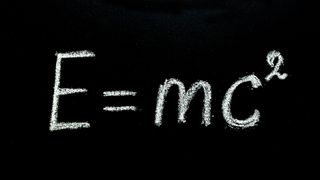Doctor Who "Heaven Sent" and Astrophysics
[Peter Capaldi as The Doctor]
One of the most disturbing episodes of the Capaldi era of Doctor Who has to be "Heaven Sent." The Doctor is imprisoned in his confession dial by the Time Lords, and is faced with a wall of Azbantium, a mineral that is harder than diamond. Being the Doctor, he recognizes that there is a similarity between his situation and that of the eponymous shepherd boy in the Brothers Grimm tale; but instead of a bird chiseling a mountain of diamond with his beak, the Doctor must punch his way through the Azbantium wall in order to escape. But to make the seemingly impossible task even more daunting, the Doctor is continually killed and must make another copy of himself using a teleportation chamber in order to continue with his hopeless attempt at escape.
Of course, the Doctor does succeed, after beating his head against the wall - metaphorically of course, since it was his fist - for about 4.5 billion years. And Prometheus thought *he* had it bad!
What, you ask, does this have to do with astrophysics?
Thursday morning, during my 8 AM Astrophysics class, we were discussing how the sun creates its energy using nuclear fusion. Basically, hydrogen nuclei collide at very high energies, and through a chain of different steps, eventually create a helium nucleus and energy via
(thank you Dr. Einstein!)
However, hydrogen nuclei are nothing more than protons, and as you learned in high school science, protons have a positive electric charge, and like charges repel (and opposites attract). So when you try to slam protons together, they resist it - very strongly! In fact, it takes a force stronger than the electromagnetic repulsion - a force literally called the Strong Force - to overcome this and start the fusion cycle. But in order to allow the Strong Force to take over you must get the protons very close indeed, which is very unlikely. The process is likened to trying to walk through a wall.






Comments
Post a Comment